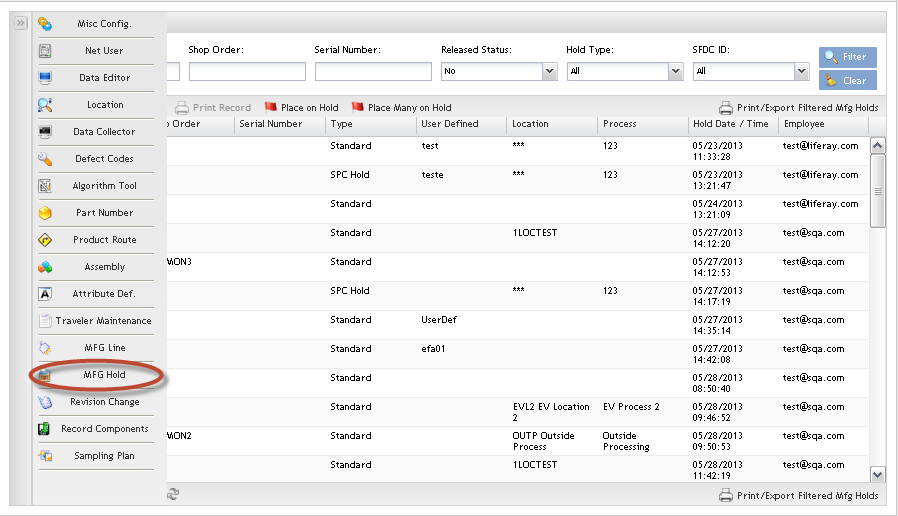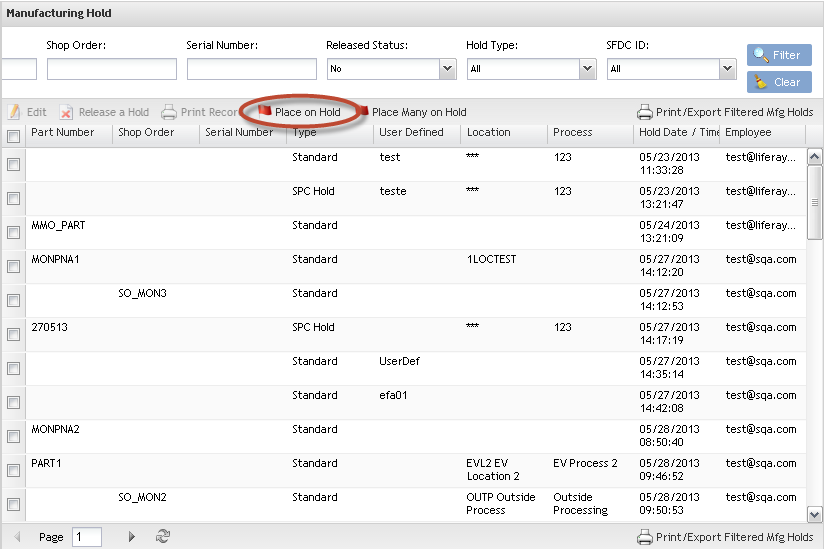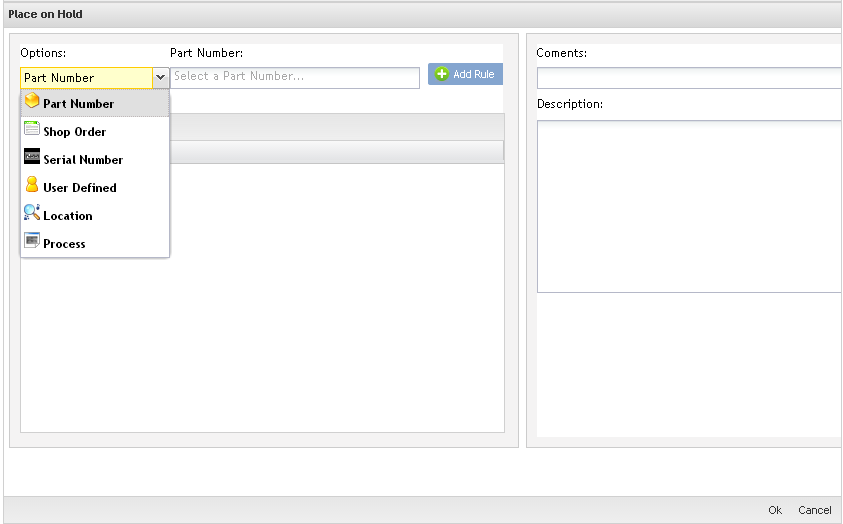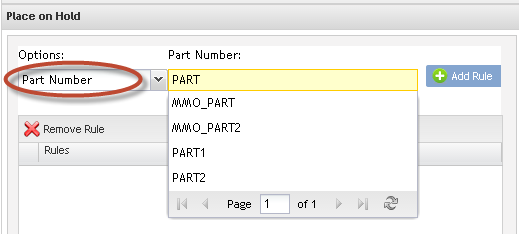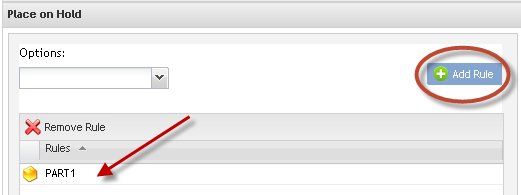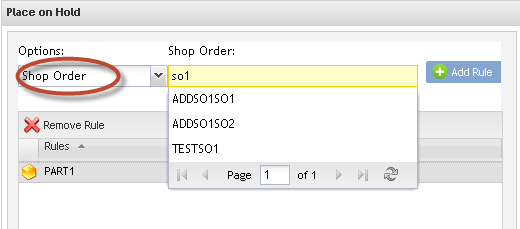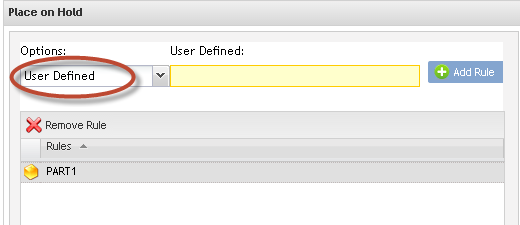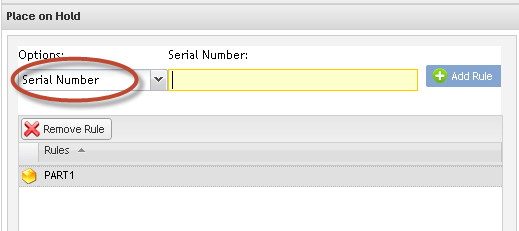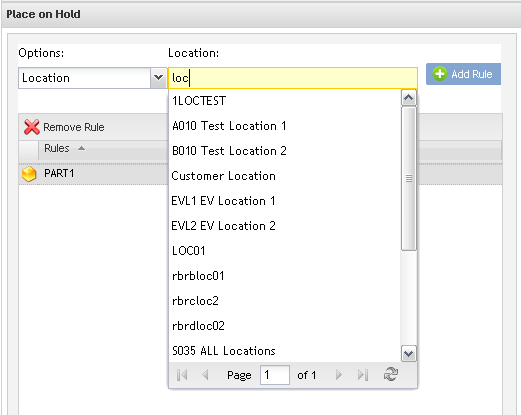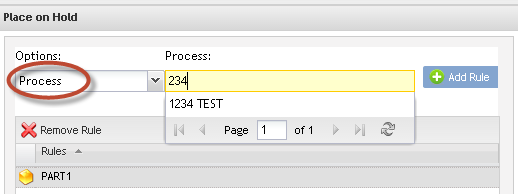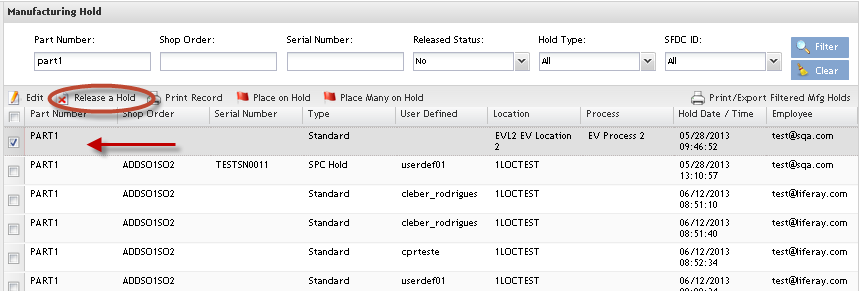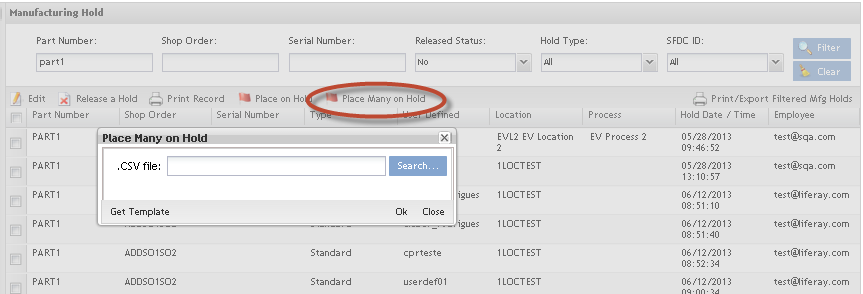SOP-5-I-MES0008-C Mfg Hold Maintenance
This edition applies to MDS Portal xx-x Application and all subsequent releases and modifications until otherwise indicated in new revisions.
Contents
Introduction
The Shop Floor Data Collection System (SFDC) communicates interactively with the Customer Order Processing System (COPS), and Statistical Process Control/Statistical Quality Control (SPC/SQC). The Manufacturing Data System (MDS) makes the communication between these systems possible.
SFDC provides real-time information used by SPC/SQC and MESWeb to create quality control reports. The data configuration for SFDC PC is handled within the Manufacturing Data System (MDS), which is a complete factory automation system. The SFDC System uses barcode scanning, both manual and automated, to monitor and control a single product line or an entire plant. SFDC Configuration collects data, provides analysis, maintains unit histories, and controls product movement on the manufacturing floor.
The system provides Access Control between the modules of the application, including the functionalities of each screen. The current version has an SFDC Configuration screen which provides access to all screens and its functionalities (view, add, edit, delete, print and generate output file), and a View-Only mode screen which only supports view, print and output to file; to support these screen modes, the MDS user or group of users have specific profiles, which provides specific access to MDS screens and functionalities.
Mfg Hold (Manufacturing Hold) Maintenance
This functionality enables the user to place units on hold within SFDC, preventing the normal movement dictated by the SFDC routing. SFDC checks the database table once a minute to see if any hold status changes have occurred. If so, the SFDC PC processes the place/release hold request. Only Standard Shop Orders can be placed on hold in the MFG Hold Maintenance module.
The user can add a comment or a description for the Mfg Hold if desired. These fields are editable and, beginning in SFDC version 6.0. A comment entered into the comment field, will result in a comment being automatically added to the unit history of any scanned serial number affected by the manufacturing hold. If the comment field is left blank, then a comment will not be recorded in the unit history of any scanned serial number affected by the hold.
If MFG Hold entry has Description = "SPC Hold", the Edit and Release buttons will be disabled.
Note: The automatic comment requires both MDS 14-4 or greater and SFDC 6.0 or greater.
- To list Manufacturing Holds, click Mfg Hold Maintenance from the SFDC Configuration page.
Manufacturing Hold list (Filter Settings) is displayed:
Figure 1: MFG Hold Main Page
- Perform desired filtering by populating the fields Part Number, Shop Order, Serial Number, Release Status, SPC Hold or a combination of these fields.
- Click Filter to view filter results.
- Click on Clear to clear the fields and start a new search.
Placing on Hold
This functionality enables a user to create active Manufacturing Holds. Manufacturing Holds can be placed using any combination of:
- Part Number (non Oracle)
- Shop Order (non Oracle)
- Serial Number (non Oracle)
- User Defined
- Location
- Process
Note: Based on the original Oracle/MDS interface design, holds for Oracle Part Numbers, Shop Order Numbers and/or Serial Numbers need to be controlled by Oracle. The Oracle hold will sent a transaction to SFDC, and SFDC will put the Shop Order on hold until the Oracle Discrete Job is changed back to a status of released.
To place a hold, click the Place on Hold button.
Figure 2: MFG Hold Main Page
The Place on Hold screen is displayed:
Figure 3: Place on Hold
Create the desired Rules using the Options drop-down menu. Each Rule Option is optional, yet at least one rule is required for creating a Manufacturing Hold.
Figure 4: Select Part Number
If the Manufacturing Hold is Part Number based, select Part Number from Options drop-down menu.
The user can use the filter option to search part numbers in the part number table. As valid filter criteria is entered, the Results field is updated.
To select a Part Number, double click on it.
Click on Add Rule to confirm the rule addition.
Figure 5: Place on Hold - Rules
The selected part number is displayed as a rule at the Rules section.
To remove it, just click on the Remove Rule button.
Selecting Shop Order Number:
Figure 6: Select Shop Order
If the Manufacturing Hold is Shop Order based, select Shop Order from Options drop-down menu.
Either key-in the shop order value, or click the Browse button to display the Shop Order Browser screen.
The user can use the filter option to search shop orders. As valid filter criteria is entered, the Results field is updated.
To select a Shop Order, double click on it.
Click on Add Rule to confirm the rule addition.
Note: If creating a hold using Shop Order as a Rule, the user does not need to created the Part Number based Rule, unless the shop order contains multiple part numbers (in the event serial numbers change part number mid way through the route).
Selecting User Defined field:
Figure 7: Select User Defined
If the Manufacturing Hold is User Defined based, select User Defined from Options drop-down menu.
Key-in the valid User Defined data (up to 20 characters) to identify the desired units.
The user can use the filter option to search shop orders. As valid filter criteria is entered, the Results field is updated.
Click on Add Rule to confirm the rule addition.
Selecting Serial Number field:
Figure 8: Select Serial Number
If the Manufacturing Hold is Serial Number based, select Serial Number from Options drop-down menu.
Key-in the serial number value.
Click on Add Rule to confirm the rule addition.
Note: Only one hold for a serial number is allowed. If an attempt to add another hold for a serial number that already has a hold defined, a message is displayed stating that a record already exists for the serial number
Selecting Location field:
Figure 9: Select Location
If the Manufacturing Hold is Location based, select Location from Options drop-down menu.
Either key-in the Location name, to display the Location Browser screen.
The user can use the filter option to search by Line and/or Location. As valid filter criteria is entered, the Results field is updated.
To select a Location, double click on it, or highlight it and click Ok.
Click on Add Rule to confirm the rule addition.
Note: If the Location and Process Options are left blank or not selected as a Rule, SFDC puts the unit(s) on hold regardless of current Location or Process. If the location is provided, SFDC will not allow units which match the other Rule criteria to be scanned at this location. If the Process is provided, SFDC will not allow units which match the other Rule criteria to be scanned at this Process (including any/all locations assigned to this process name).
Note: It is not allowed to put only a location on hold. The user must select a part number, shop order, serial number or user defined to place the configuration on hold.
Keep in mind that if a hold is placed by Location, only units at that specific Location are affected by the hold. If hold is desired for many Locations with the same process name, it is preferred that the Process Option be used instead.
Selecting Process:
Figure 10: Select Process
If the Manufacturing Hold is Process based, select Process from Options drop-down menu.
Either key-in the Process name to display the Location Browser screen.
The user can use the filter option to search Process name. As valid filter criteria is entered, the Results field is updated.
To select a Process, double click on it, or highlight it and click Ok.
Click on Add Rule to confirm the rule addition.
Note: If the Process and Location Options are left blank or not selected as a Rule, SFDC puts the unit(s) on hold regardless of current Process or Location. If the location is provided, SFDC will not allow units which match the other Rule criteria to be scanned at this location. If the Process is provided, SFDC will not allow units which match the other Rule criteria to be scanned at this Process (including any/all locations assigned to this process name).
Editing a Hold
This functionality enables the user to edit just the Hold Description.
Releasing a Hold
This functionality enables the user to release an existing Manufacturing Hold.
To Release (remove) a Manufacturing Hold, filter and/or select the desired hold, then click the Remove a Hold button.
Figure 11: Release a Hold
A confirmation message is displayed:
Click Yes to confirm, or No to abort.
The record is removed from the Active Manufacturing Holds list.
Place Many on Hold
To place many part numbers, shop orders, serial numbers, user defined, locations or process on hold, click on Place Many on Hold button.
Figure 12: Place Many on Hold
The .csv file format will have the following format:
Part_Number Shop_Order Serial_Number User_defined Location Process
Each row is a MFG Hold record. Only one option may have multiple comma separated entries. This will create a parent and children set of MFG Holds.
Example: "TESTPN1, TESTPN2, TESTPN3, TESTPN4", "", "", "", "PACK", ""
Will create a location hold for part numbers TESTPN1-TESTPN4 at the location PACK
After import the CSV file, the user can see it the result in the Manufacturing Hold screen:
Figure 13: Manufacturing Hold
NOTE: For more than one kind of rule configured the list displays "***" instead of the rule.
In this screen is possible to edit the description information.To Delete Holds click on the Delete button.Click on OK button to commit the changes, or on Cancel button to cancel the changes.
Figure 14: Place on Hold
Allow create multiple holds from a single parent hold includes:
- Need to change the structure of MFG Holds to create a parent or master hold.
- Display parent/child relationship.
- Individual holds (multiple serials, part numbers, SOs, etc.) would be listed under the parent hold.
- Individual holds would have the same rules as the parent hold, with the exception of the unique rule (serial number, part number, etc.)
- Individual holds could be deleted or parent hold could be deleted, deleting all individual holds listed underneath.
- Allow or support comma-separated file for serials, part numbers, shop orders, etc. when multiple holds are required. Importing a comma separated file will create the parent and child hold relationship.
Business rule: Only a single rule in a MFG hold can have a multiple entry (ie: serial number, part number, etc.) Multiple entries cannot be entered for multiple rules (ie: multiple locations, and multiple serial numbers, etc.)
Print/Export Filtered Mfg Holds
This functionality enables user to print/export filtered Mfg Holds.
To print/export filtered mfg holds, click the Print Filtered Mfg Holds.
Figure 15: Print/Export Filtered Mfg Hold
A report is generated and the user is able to save the file or print it.
Click Save to save, or Print to print the report results.
Appendix A
| COPS | Customer Order Processing System |
| FES | Factory Execution Systems |
| MDS | New Manufacturing Data System (Java technology) |
| GLAD | Global Administration |
| LDAP | Lightweight Directory Access Protocol |
| Mfg | Manufacturing |
| MES | Manufacturing Execution Systems |
| MDS | Manufacturing Data System |
| PRAC | Process Access |
| SFDC | Shop Data Floor Collection |
| SPC | Statistical Process Control |
| SQC | Statistical Quality Control |
Appendix B
Glossary
Access Control
it is a module that will set the permissions for users and external customers of Sanmina
administrator
the System Administration has full access - all plants, all reports, all users.
component
A component is a specific piece of data that appears on a label, for example: bar code, part numbers, graphic images, line or text. Hence, label components are broken down into several different types: text, graphic images, MDS database values, or a combination of text and database values.
framework
In software development, a framework is a defined support structure in which another software project can be organized and developed. A framework may include support programs, code libraries, a scripting language, or other software to help develop and glue together the different components of a software project.
SFDC Configuration
The rules used to define how SFDC collects data, provides analysis, controls processing and maintains unit histories
Site Minder
Universal login of Sanmina
username
the username is the siteminder username (or a partial string)
Document Revision History
| 05/10/13 | Elaine Fonaro | Technical Writer | v 1.0 | This is the first revision of MDS User’s Guide |

